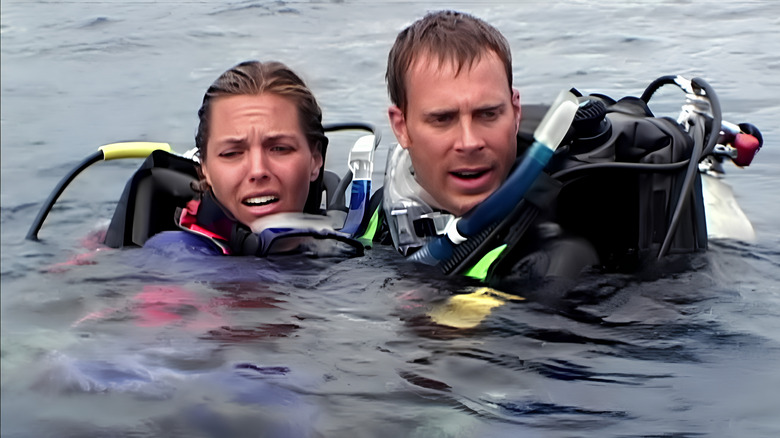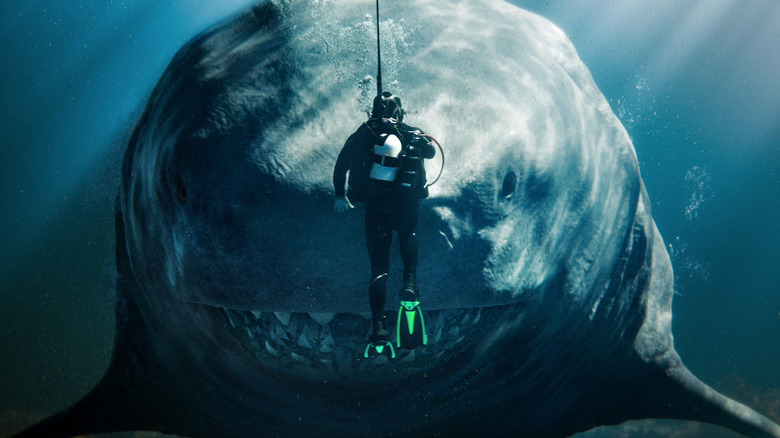How Open Water's Real Shark Scenes Break The Norm Of Movies Like Meg 2
In order to enjoy the outrageous shark thriller "The Meg" — as well as the sequel "Meg 2: The Trench," which hits theaters on August 4 — one must suspend one's disbelief. "Factually wildly incorrect," wrote one Redditor of the 2018 film. "Visually very pleasing." Indeed, the general consensus over on the r/sharks subreddit indicates that shark movies are for imaginative audiences looking to have a little fun — not shark pedants. This is true of most shark movies. Even "Jaws," the uncontested grande dame of the genre, relied on a mechanical shark.
When "Open Water" debuted in 2003, it stood separate from the pack by incorporating real-life sharks — no mechanical ones, and no CGI. Directed by Chris Kentis and made with a meager $130,000 budget, "Open Water" follows Susan (Blanchard Ryan) and Daniel (Daniel Travis), a vacationing couple who gets separated from their dive boat and is left to fend for themselves in the shark-infested open seas of Australia. The film is loosely based on Tom and Eileen Lonergan, who were lost near the Great Barrier Reef in 1998.
Contending with the sharks was challenging for Blanchard Ryan, who feared the toothy animals. ”I knew we were safe, that it wasn't a snuff movie, that I wasn't going to die, which is, I guess, where I draw the line,” she told the New York Times. ”Looking back, it was the most magical working environment — two actors, two filmmakers, no hair and makeup, no wardrobe and lighting, no crew wanting meal breaks. Just get in the water and do the work.”
Open Water provides more real-life dread than The Meg
For "Open Water," Chris Kentis went for a less-is-more strategy. Sharks are the horrific coda to the film, not the main attraction. Before the monsters finally make an appearance, Daniel and Susan have been floating for hours and have already contended with dehydration, paranoia, and overwhelming dread (plus some jellyfish stings). It's the ominous threat of sharks that hangs over the film, until their climactic feeding frenzy. "I don't know what's worse," Susan says at one point, "seeing them or not seeing them."
There were, to be certain, a lot of sharks — 40 or 50, Blanchard Ryan estimated. "Gray fins as far as the eye can see," she continued in the same interview with the New York Times. "And we basically had to climb in the water right on top of the sharks, because they don't exactly get out of your way."
"The Meg" and other shark movies like it, meanwhile, aim for more of a maximalist approach, with the help of an AI-powered system operated by the animation company Ziva. AI was crucial in demonstrating the megalodon's massive 75-foot scale. That technology should be even more impressive in "Meg 2."
For critics like Roger Ebert, "Open Water" was successful because of its real-world implications, even if it's less of a fun romp than a movie like "The Meg." "I'm not afraid of water and don't spend much time thinking about sharks," he wrote, "but the prospect of being lost, of being forgotten about, awakens emotions from deep in childhood. To be left behind stirs such anger and hopelessness."

